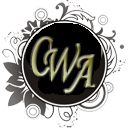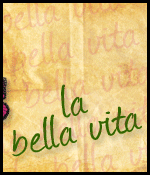Hello everyone - Happy Monday! I thought as you are all getting ready for the holidays, buying toys that hopefully will last more than 10 minutes on Christmas morning that you might all find this article to be interesting. This article is from a interesting website, TreeLiving.com, where you can find all kinds of eco-friendly and natural methods you can use with your family. - Tina
Tips for Buying Safe Toys for Christmas
Unfortunately, the safety of children's toys has come under scrutiny lately. From lead paint recalls to small parts that pose a choking hazard, it's good to be careful when buying your children's Christmas presents. Here are some tips for buying safe toys.

1. Go for toys that are free of toxic chemicals. Many plastic toys contain or are made from PVC, a potentially harmful form of plastic. PVC contains dioxin, which is a toxic chemical implicated in breast and other cancers. Many action figures and other small figurines are made from PVC - in fact, they are often simply called "PVC figures."
You may have seen some plastic items marked "BPA free." BPA, or Bisphenol-A, is a basic component of plastic manufacture. BPA is commonly found in polycarbonate plastic. Look for the label indicating the plastic is free of BPA.
2. Avoid plastic altogether. If all the acronyms and chemical names overwhelm you, or if you just don't trust plastic, avoid it. Wood, porcelain, and glass are safer toy materials. Checker and chess sets, unpainted wooden cars, trains, marble runs, doll houses, and baby toys are just some of the many wooden options available. You can always paint these items yourself with safe paint. Dominoes and other games with pieces made from porcelain are virtually unbreakable. Glass marbles and other sturdy glass items make good toys as well.
3. Look for toys that are made in America or Europe. If you want eco-friendly, organic, safe toys, they will come from the USA or Europe. Toys made in China may or may not be okay, but truly eco-friendly, organic toys are not manufactured in China.
4. Look for locally made toys. Many communities hold fairs and festivals where craftspeople sell their creations. Handmade, wooden toys and safe, lead-free ceramics and jewelry are common at these fairs. Many of these vendors also have sites online.
5. Stay away from small, detachable parts. The sewn-on eyes and plastic noses of stuffed animals could be swallowed by small children or babies, and pose a choking hazard. Any toy that has small parts that may come loose is not necessarily safe.
6. Quiet toys are better for your children's health. Noisy, loud toys can damage hearing, and grown-ups can find them very annoying! Some sources say that there are children's toys capable of producing sounds as loud as a jet plane, and toys with sirens, horns, and sound-emitting battery toys can all damage hearing in children and babies. If it bothers your ears, it's not good for your kids.
7. Sturdiness is paramount. If a toy is going to be ridden or sat upon, make sure it's stable. Also note the shape - does the seat back rise in the back to provide support? Could clothing or skin get pinched easily between moving parts?
8. Research the safety tests. There are various governmental agencies that monitor toy safety. The United States Consumer Product Safety Commission (CPSC) and the Environmental Protection Agency (EPA) can be searched online for toy recalls and other safety information.
This article is originally from TreeLiving.com
PS: Here is another article you might be interested in:
Decorate Your Home with Nature to Add Festive Cheer
PS: Here is another article you might be interested in:
Decorate Your Home with Nature to Add Festive Cheer


























0 comments:
Post a Comment